INDUSTRIAL & TERMINAL RAILROADS & RAIL-MARINE OPERATIONS OF BROOKLYN, QUEENS, STATEN ISLAND, BRONX & MANHATTAN:
| BRONX TERMINAL MARKET - CITY OF NEW YORK Concourse, the Bronx |
|
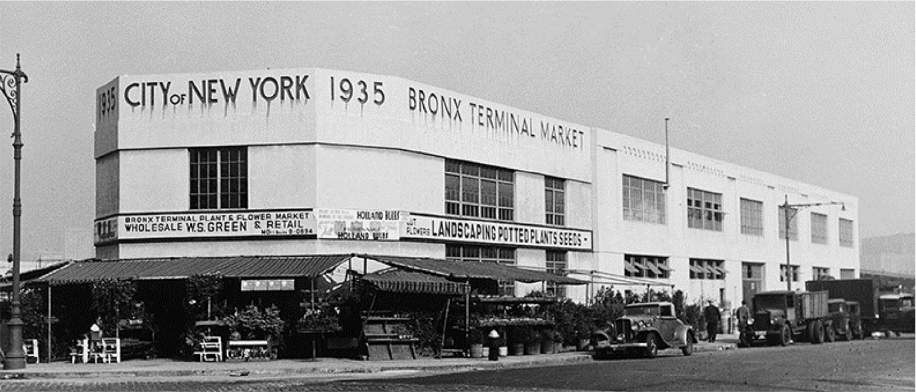
.
|
updated: |
||
|
|
||
|
update summary: |
date: | |
| page created | 5/13/2024 | |
.
.

History & Property
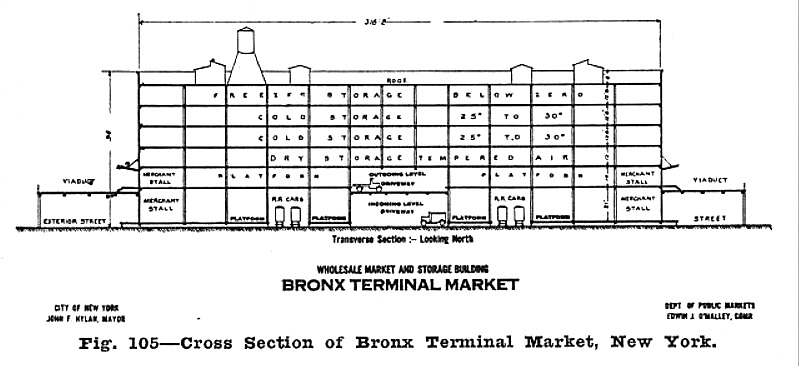
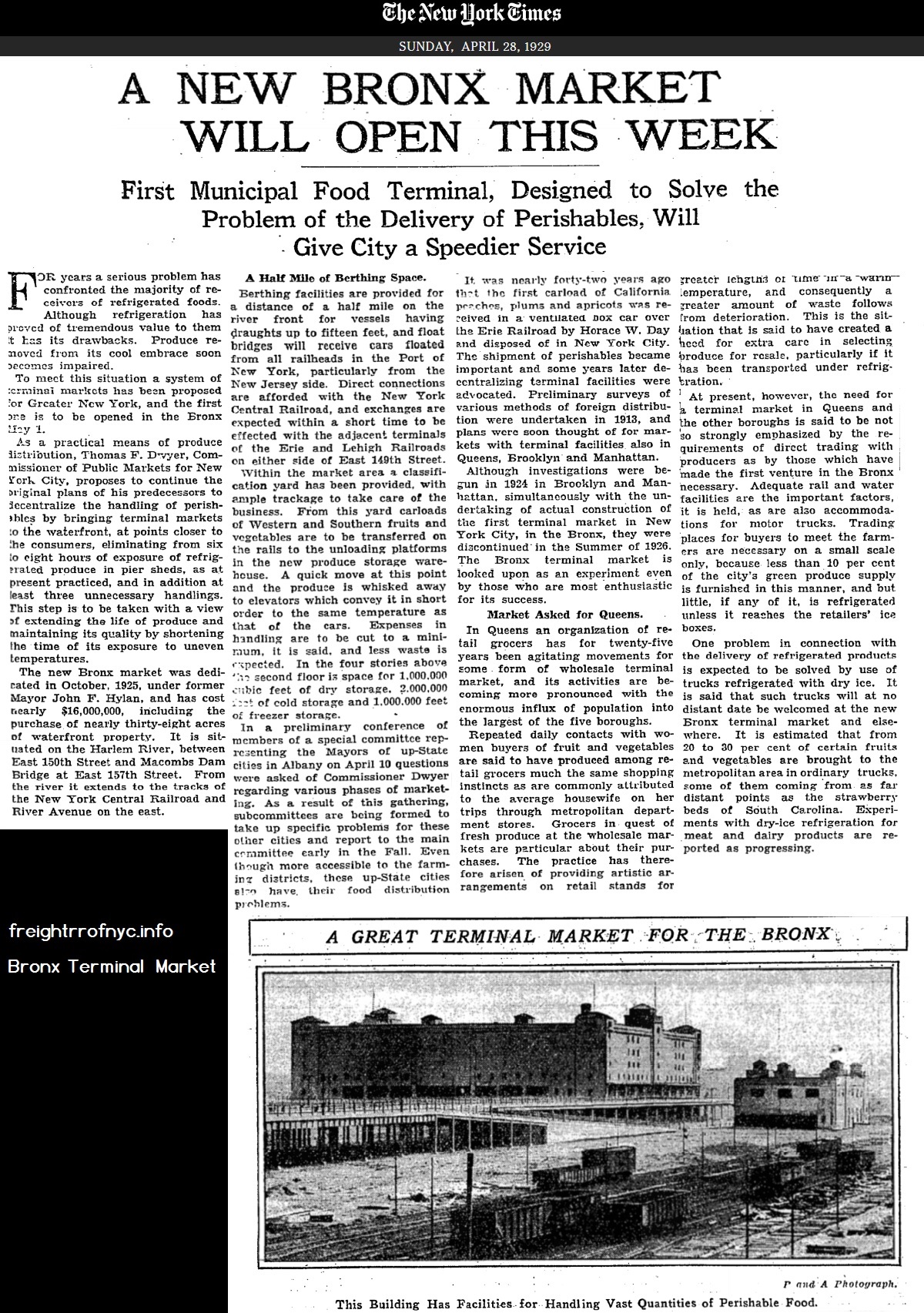
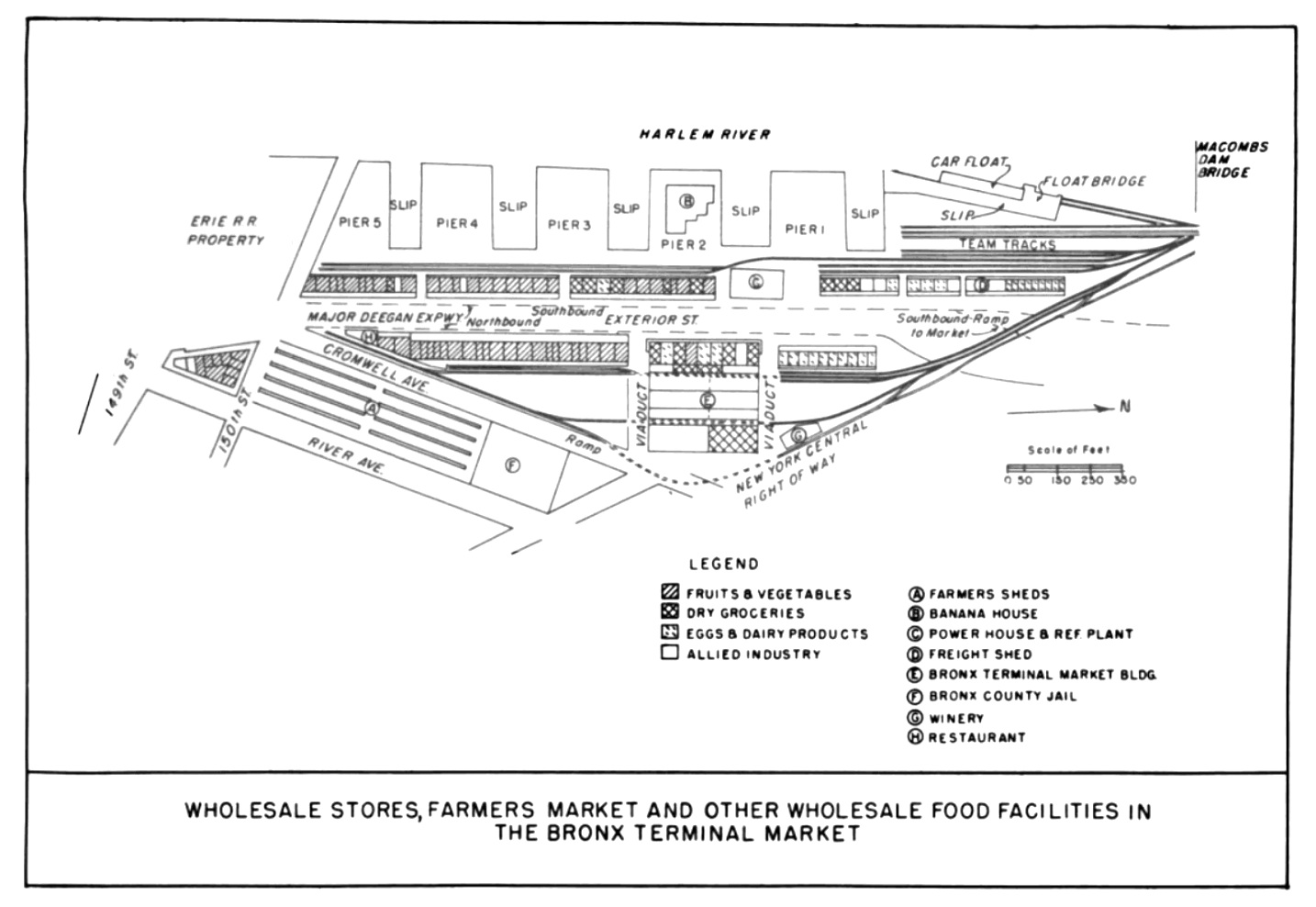
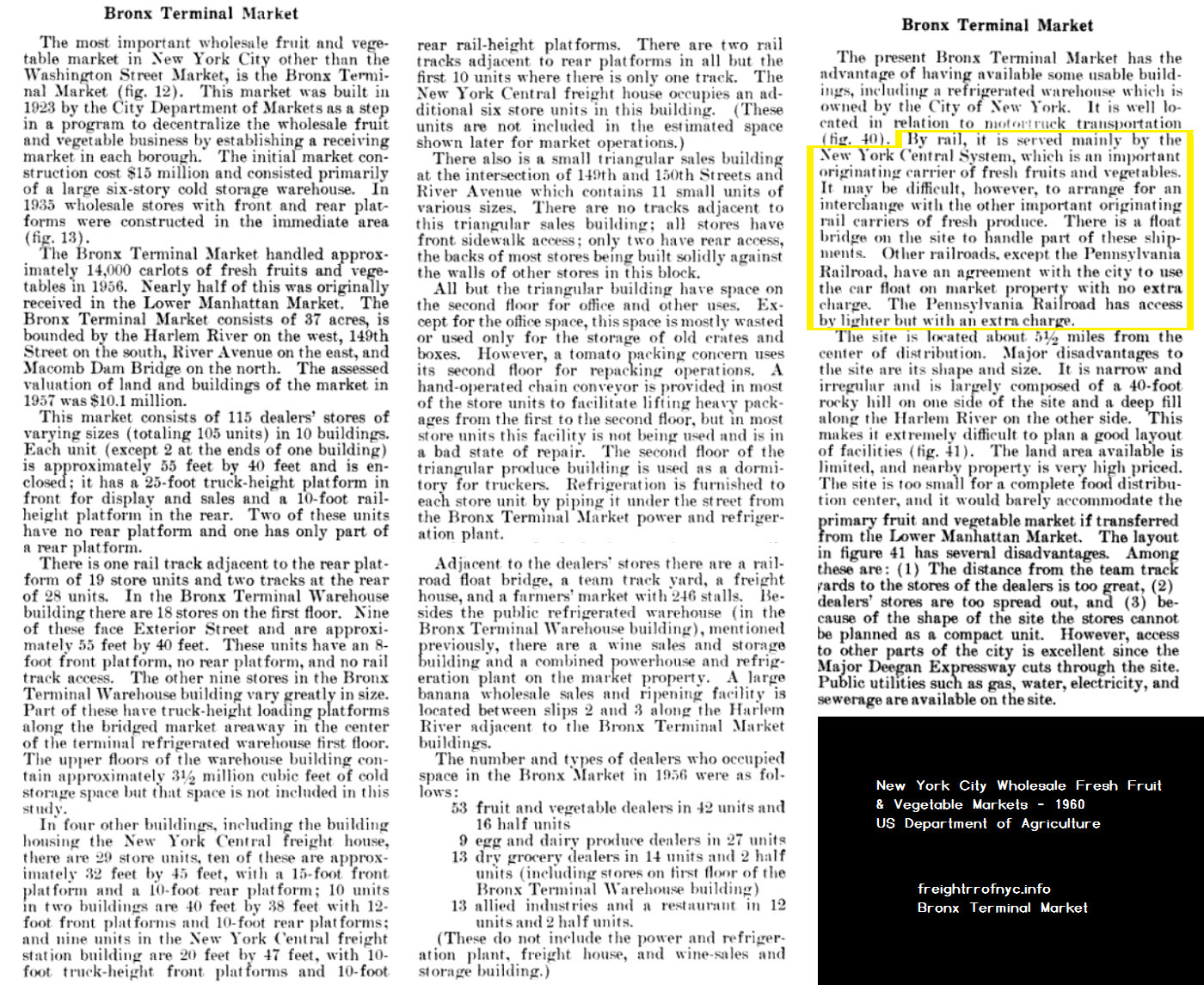
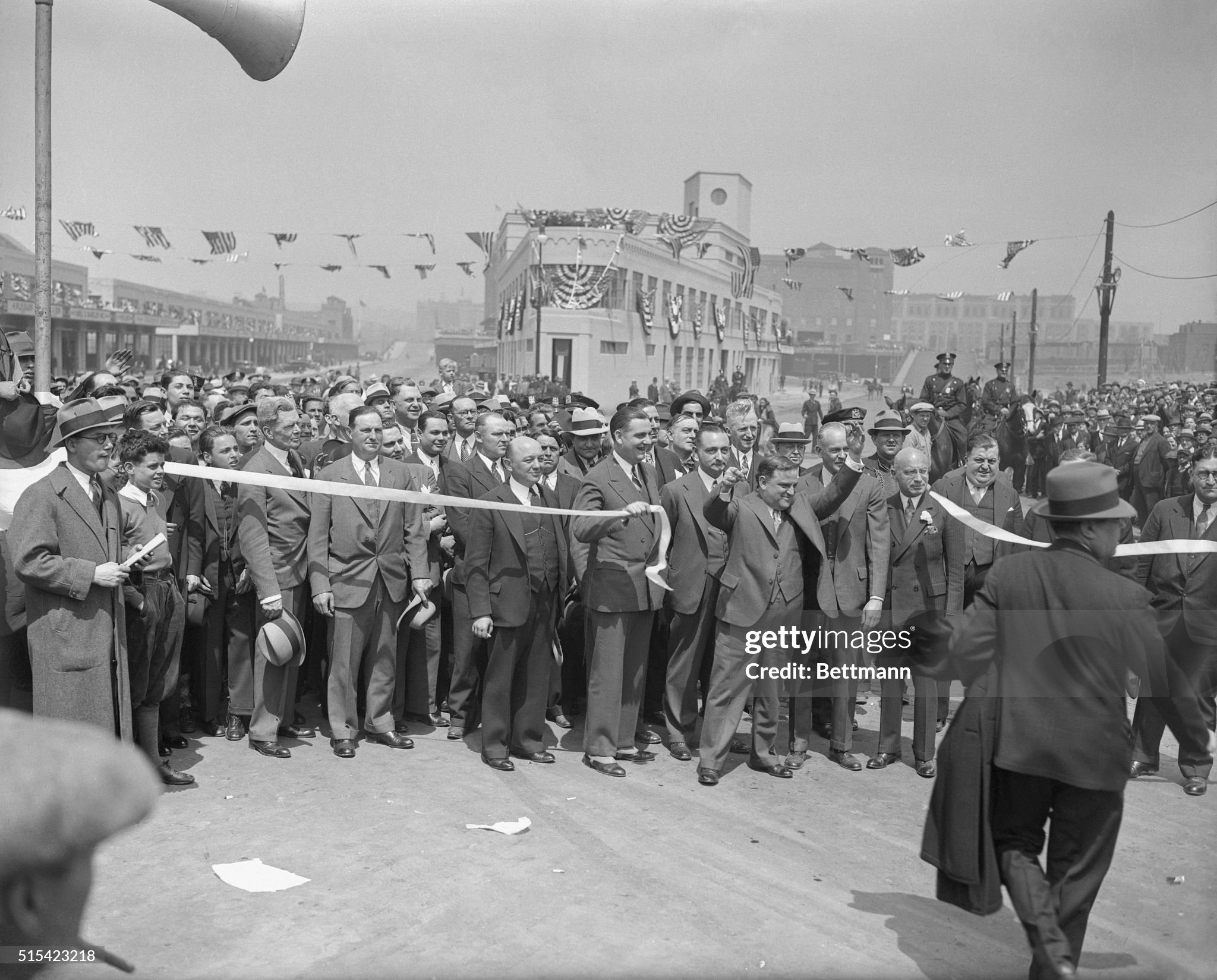

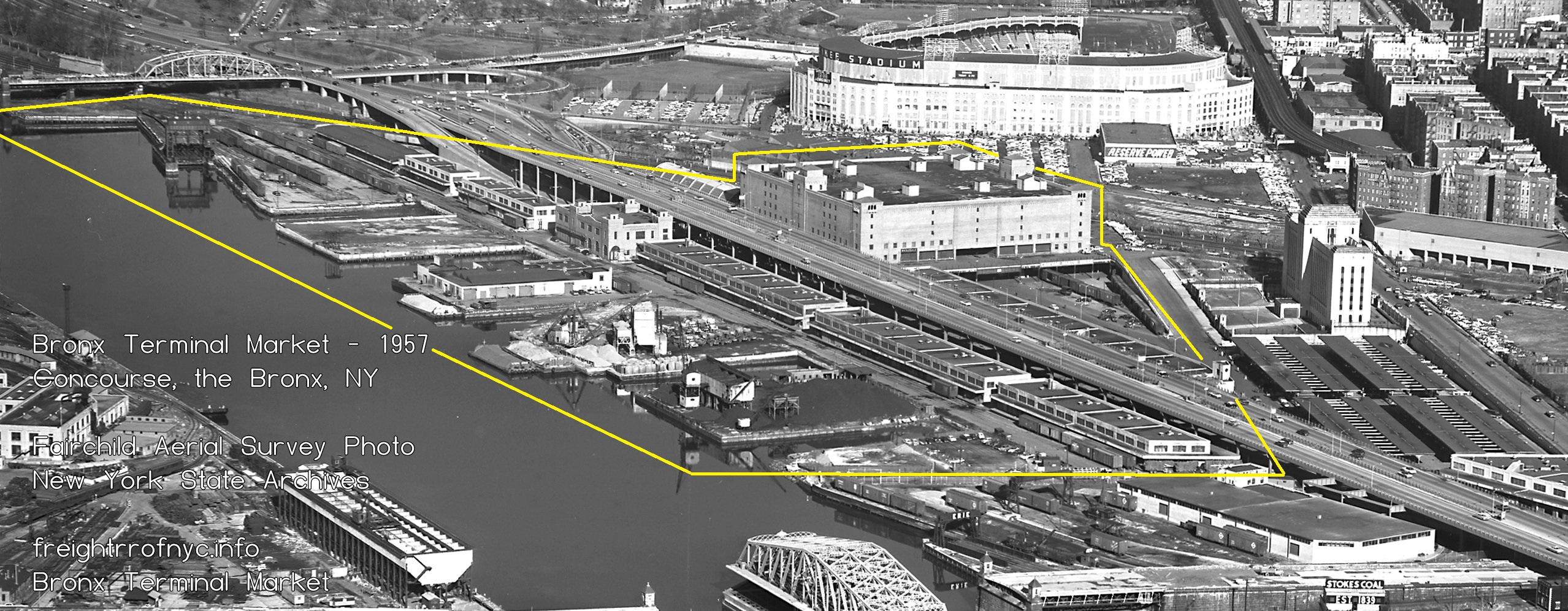
Trackage
.
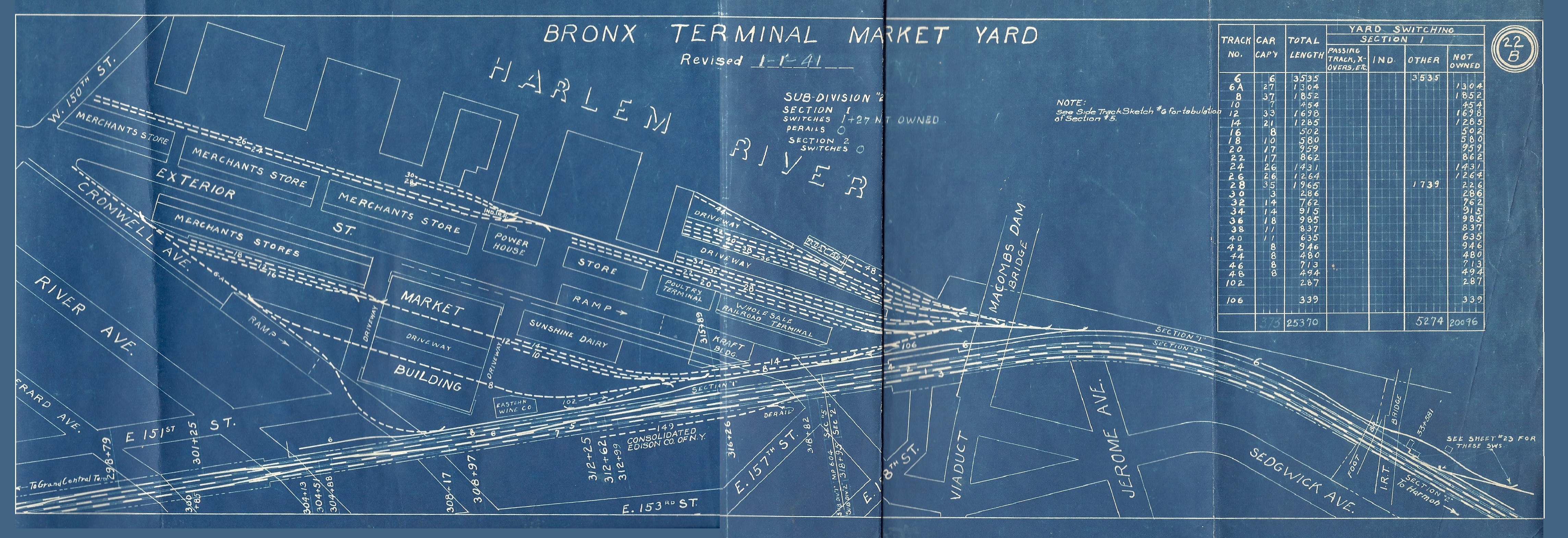
1941
.
.
|
|
|
|
|
some pages missing - seeking complete book
|
|
|
|
|
|
|
I cannot remember who sent me scans of this book, but it was 15 some odd years ago.
If you have the book and recognize it here please feel free to contact me for appropriate credit.
.
.
In February
1948, 25 tank cars of Chateau Martin wine were shipped from the
Waterford winery to the Bronx NY. The trade magazine Wines & Vines
reported in its March 1948 issue that the record trainload carried
200,000gallons of wine. The train left Waterford, California behind
Southern Pacific #1770 [2-6-0] SP1770 with 15 cars of Port, 7 cars of
Muscatel and 3 cars of Dry Red Wine. A long banner on the side of the
train proclaimed:
The press covered the arrival of the train in the Bronx where
dignitaries were given a taste of wine directly from one of the tank
cars (note the hose from the dome of a tankcar in foreground. The photo
below shows the participants and some of the press at the celebration.
Note that the banner is again attached to the sides of the tank cars.
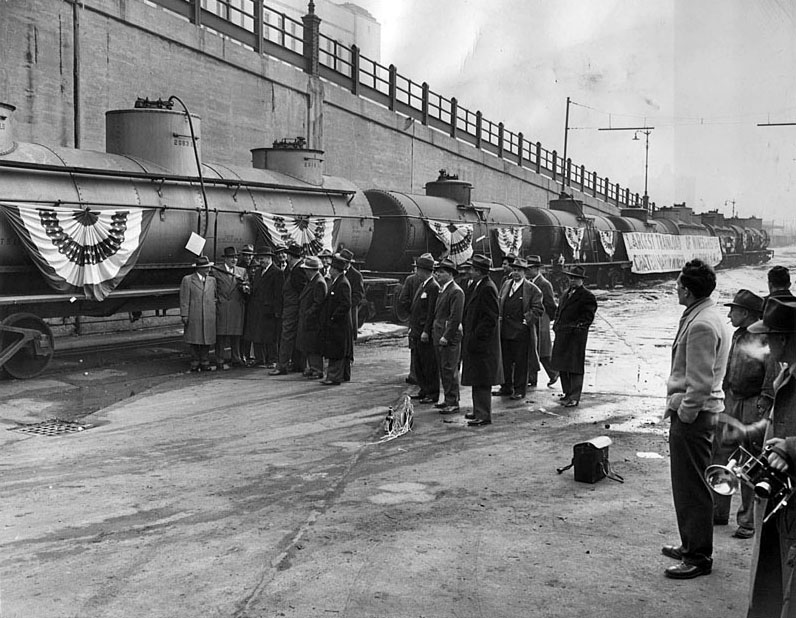
The 25-car trainload of Chateau Martin Wine arrives at the Bronx Terminal Market on February 21, 1948.
Irving Haberman photo,
collection of James E. Lancaster
The Bronx Terminal Market "BTM", was owned by the City of New York, but was served by New York Central Railroads' Highbridge Line and therefore it is considered an online terminal; but it also had carfloat service via a transfer bridge.
The transfer bridge could accept carfloat traffic from any of the railroads offering this service in New York Harbor and that had to be expedited, but freight traffic destined for the Bronx Terminal Market was Car Load only, and no Less than Car Load accepted.
Rail traffic appears to have been in similar capacity and operation as
for the Brooklyn Wallabout Market: Wholesalers would contract with
their railroad for through delivery of their carloads. The only
difference between Bronx Terminal Market and the Wallabout Market was
Wallabout was Pier Station delivery only (until BEDT opened their float
bridge on Clinton Avenue in 1935)
As the BTM was connected to
New York Central's Hudson Line, the Mott Haven Yard, and likewise New
York, New Haven & Hartford via Melrose Junction, freight
(perishables for the market) were brought in primarily via the overland
routes. The float bridge appears to have built for redundancy.
The transfer bridge constructed at the Bronx Terminal Market, was a French Patent, or "Electrically Operated, Overhead Suspension Contained Apron" type.
It was built in 1925 but did not get activated until 1935 and was used as needed until circa 1975.
A carfloat transfer bridge was also constructed on the Harlem
River bulkhead in 1925, which permitted the direct transfer of freight
cars by
carfloat to the market from any one of the other rail-marine terminals
in New York Harbor, including the New Jersey waterfront terminals; but
the Bronx Terminal Market had a direct track connection to the New York
Central Railroad was the primary interchange.
Review of the publication "New
York City Wholesale Fresh Fruit & Vegetable Markets - 1960";
reflects that all other railroads EXCEPT the Pennsylvania Railroad
entered into service agreements to provide carfloating to the Bronx
Terminal.
Transfer Bridge
.
A carfloat transfer bridge was constructed on the Harlem
River bulkhead with the initial construction in 1925 (possibly not
completed until 1928), which permitted the direct transfer of freight
cars by
carfloat to the market from any one of the other rail-marine terminals
in New York Harbor, including the New Jersey waterfront terminals; but
the Bronx Terminal Market had a direct track connection to the New York
Central Railroad was the primary interchange.
However review of the publication "New
York City Wholesale Fresh Fruit & Vegetable Markets - 1960";
reflects that all other railroads EXCEPT the Pennsylvania Railroad
entered into service agreements to provide carfloating to the Bronx
Terminal.
| The transfer bridge was of the Overhead Suspended, Contained Apron design as patented by
James B. French. The French patent bridges were constructed in the following order after the first one at West 72nd Street in Manhattan for the New York Central in 1911; followed by (presumably) the four (two pair - "Abie" & "Benny" and "Charlie" & "Davey") at 65th Street - Bay Ridge Yard in 1916, then the pair at Long Island City (#1 & #2) in 1925. It is believed this transfer bridge came immediately after those built at Long Island City. What is known, is the capacity: 170,000 pounds and range of motion 18 feet. However, the New York Times article dated October 5, 1935, states the transfer bridge was not used until the date of the article.
New York City Wholesale Fresh Fruit & Vegetable Markets - 1960
US Department of Agriculture authors collection added 01 August 2019 |
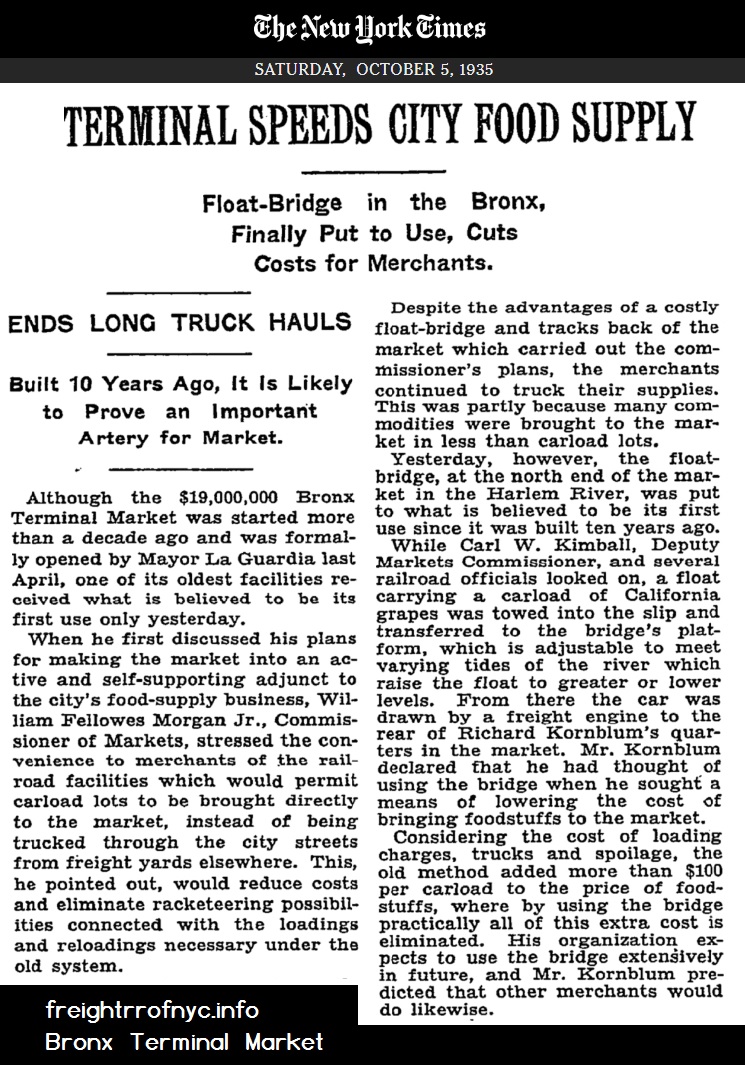 |
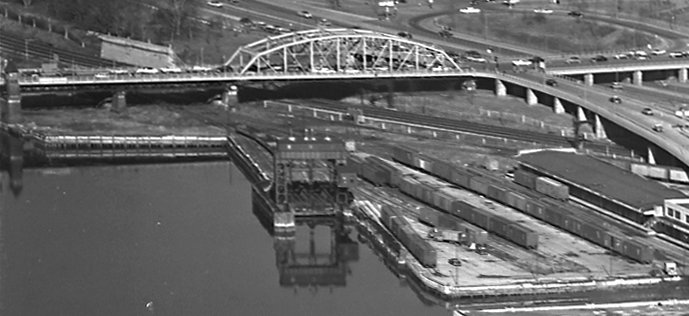
Fairchild Aerial Survey Photo - December 15, 1957
zoom and crop on Bronx Terminal Market transfer bridge
New York State Archives Digital Collections
NYSA B1598-99-4651
Locomotives
.
No particular or dedicated roster of locomotives were known to be assigned to, or used at; the Bronx Terminal Market.
The New York Central Railroad would have supplied any available locomotive power from one of their local yards to place, retrieve or switch freight cars at the terminal, and their roster was vast.
.
As with the locomotives, and with the Market being a municipal property open to receiving service from any one of the the Class 1 railroads; a marine roster is not forthcoming.
.
.
Like what you see? Suggestions?
Comments?